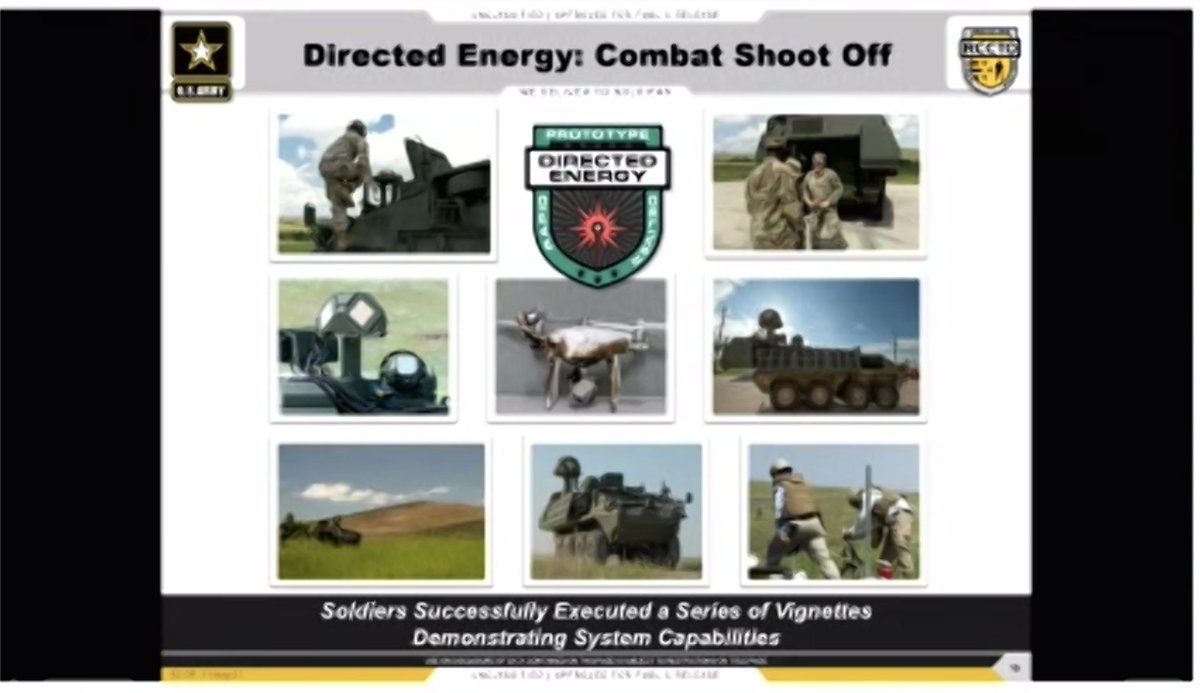
THREAD: Some highlights from TTC's Military Hypersonic Weapon Systems Conference.
Larry Wortzel discusses Chinese doctrine and compares capabilities. Notes that PLA hopes to "become capable of holding a potential enemy's mainland at risk." Raises concerns over mixing of nuclear and non-nuclear systems. 

Wortzel suggests one additional reason why China was building siloes: "I think they were having trouble maintaining [their mobile missiles]."
Robert Taylor on the STRATCOM perspective: "Our nuclear threshold is high," allowing adversaries room to "rapidly escalate below that bar." Hypersonic weapons would "allow holding targets rapidly at risk without crossing the nuclear threshold."
...In other words, a Conventional Prompt Global Strike. Taylor notes that hypersonic weapons have "been a [STRATCOM] priority for over 17 years."
"Hypersonic weapons will be vital to this command from Day 1 of fielding...[but] we have a limited amount of platforms available to host these systems." "weapons on the shelf do not deter..."
On to Sarah Popkin, AFOSR: At least 6 program officers working on hypersonic basic science. "there was a recent BAA" from AFOSR, combining basic science and manufacturing, characterizing variance in high temp material performance. 

Discusses one experiment refining numerical simulation of boundary layer transition on canonical flared-cone geometry, with improved models that conformed more with experimental results 

BOLT: BOundary Layer Transition experiment: a study geometry that would be publicly releasable, but could be used to examine properties of sharp leading edge and concave surfaces. Flight test done June 2021 at Esrange, Sweden. Test had anomaly but was intended to test Mach 5-7. 

More on modelling: improvements to ablation models; 4D x-ray tomography of carbon-carbon. Shows video of fibers degrading at various temps; at high temps, they degrade from the top, but at certain temps, oxidation comes from below and fibers collapse. 



Lot of focus on intersection of atmospheric science and aerothermal physics; on atmospheric particulates, unpredictable behaviors in different parts of the stratosphere. Even terrain. "You wouldn't think mountains would have an impact on the stratosphere, but they do."
"It's a small investment trying to bite off a lot of risk...it's okay to fail." Projects range from single $millions to <20M. "It's high-risk, small investments; it's kind of how AFOSR operates."
Scott Morton from DoD's HPC modernization program lists the challenge involved with hypersonic system modelling. 

Need to model for "Tens of minutes—this is scary to a computational fluid dynamicist" but necessary to model heat soak, thermal-structural interactions. "If the vehicle starts to bend, and you have a very tightly designed [inlet]," you can get engine unstart.
Current simulation codes "are research codes" instead of ones optimized for the production workflow. 

Morton: "get rid of the valley of death" in S&T transition by developing a multi-fidelity, multi-disciplinary model. A an integrated tool modelling multiple disciplines (aero, thermal, etc) at different fidelities. Effort currently "funded in the single millions of dollars." 

A couple of fascinating presentations from industry.
1) Genrad: a startup that uses new signal processing backends to dramatically increase radar range resolution and sample rate.
2) Raytheon: did a great overview of various practical difficulties in hypersonic weapon design

1) Genrad: a startup that uses new signal processing backends to dramatically increase radar range resolution and sample rate.
2) Raytheon: did a great overview of various practical difficulties in hypersonic weapon design


Dr. Gillian Bussey of JHTO: "we don't have the luxury of having a thousand flowers bloom;" JHTO focused on "the clear pathway and intention of bringing that S&T into a weapons system." Emphasis on leveraging same tech across various services. 

Bussey's S&T roadmap. The broad capability goals informed by COCOM requirements and S&T community feedback. 

"Affordable fighter-class weapons are particularly important to the OSD portfolio." "we have lots of 4th-gen fighters that aren't going to be participating on the first day of war, but if we put on a hypersonic weapon, we have a lot more pylons, a lot more shooters." 

"These hypersonic cruise missiles are more affordable [than hypersonic glide vehicles]...in the $2 to 3-4 million class." Notes they're a little more expensive than subsonic cruise missiles.
Closeup on JHTO's $53.4M FY21 projects breakdown.
"We know how to make these things fly now. We're now more focused on how to make them into reliable, robust weapons systems."
"We know how to make these things fly now. We're now more focused on how to make them into reliable, robust weapons systems."

In a new development from previous presentations, the university consortium now includes UK and Australian universities. Dedicated slide on allied co-development. 



Next steps: JHTO strategy document to release this fall. Mentions a search for other allies to participate in research collaboration. 

"There's this misperception that hypersonics is too expensive." "we've seen some great analysis...that show that hypersonics are really necessary to do what we need to do." Emphasis on weapon open system architecture/plugin, modular systems to reduce cost.
https://twitter.com/masao_dahlgren/status/1450189444221440007
I want to go back to this bit. Dean Wilkening has made this point: scramjets might be simpler to make than turbofans. Right now, we view hypersonic weapons as an expensive, exquisite capability. But maybe not forever.
• • •
Missing some Tweet in this thread? You can try to
force a refresh












